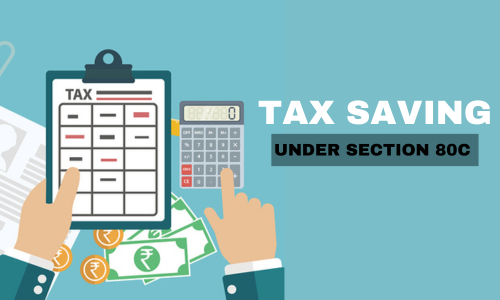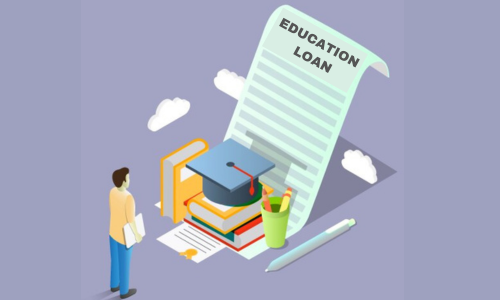In this article, we will discuss about...
Introduction
I often get asked, “How much maximum tax saving can we do?” and “What different kinds of tax deductions or tax-saving instruments are available for Indian taxpayers?” For salaried individuals, it might seem like there aren’t many options, but there are several opportunities you may not be aware of.
In this guide, I’ll explain various tax-saving options available to you, the criteria for each, and how you can start planning now. Even if a few months of the year have passed, you still have time to save on your taxes. If you missed out last year, don’t worry. You can start your tax-saving measures now.
Don’t let reading hold you back, Watch our video instead
Tax Saving Options for Taxpayers
Section 80C: The Foundation of Tax Savings
Most people know that under Section 80C, you can save up to INR 1.5 lakh through various means. This includes the principal repayment of a home loan, life insurance premiums, Public Provident Fund (PPF), and more. It’s essential to maximize this limit as it forms the foundation of your tax-saving strategy.

Section 80CCC: Boost Your Savings with NPS
You can save an additional INR 50,000 by investing in the National Pension System (NPS). This amount is over and above the INR 1.5 lakh limit under Section 80C. NPS is a fantastic retirement-focused investment option that helps build a substantial corpus for your future and provides immediate tax benefits.
Consult CA Arun Tiwari for more information at 
Section 80D: Mediclaim for Your Health and Wealth
If your company provides Mediclaim, you might think you don’t need additional coverage. However, evaluate how much coverage your company provides. If it’s not enough, buy additional Mediclaim. You can get a deduction of INR 25,000 for yourself and your family (spouse and children) and an additional INR 25,000 for your parents. If you are doing medical checkups, you can get a further deduction of INR 5,000. Keep all supporting documents, especially insurance policy and premium payment receipts, in digital format.

Section 80DD: Caring for Dependents with Disabilities
For those with dependents who have disabilities, you can claim deductions for medical expenses. You can claim up to INR 75,000 for normal disability and INR 1.25 lakh for severe disability. You need to file Form 10IA and keep medical bills and certificates. This deduction can significantly ease the financial burden of caring for dependents with special needs.
Section 80DDB: Specified Diseases and Tax Relief
For medical expenses on specified diseases, you can claim up to INR 40,000 (or INR 1 lakh for senior citizens). This requires a doctor’s certificate, so ensure your expenses qualify under this section. It’s crucial to understand which diseases are specified to avoid any issues while claiming this deduction.
Section 80E: Education Loan Interest
This section is for interest on loans taken for higher education. It can be claimed by the person who has taken the loan or their relatives. There is no limit on the amount of interest that can be claimed, and it’s especially beneficial if the loan is taken by someone in a higher income bracket. This means a parent can claim the deduction for an education loan taken for their child’s higher education, maximizing the tax benefit due to the higher tax bracket.

Section 80EE and 80EEA: Home Loan Interest Benefits
These sections provide additional deductions for home loan interest. Under Section 80EE, if you took a home loan between April 2016 and March 2017, you can claim an additional INR 50,000. Under Section 80 EEA, if your loan is from April 2019 to March 2022, you can claim up to INR 1.5 lakh. These deductions are in addition to the INR 2 lakh limit under Section 24 for interest on home loans, offering significant tax relief for homebuyers.

Section 80G: Deductions on Donations
For donations, you can claim deductions under Section 80G. Ensure you keep receipts and the PAN details of the donee. Donations can be made to specified funds, charitable institutions, and certain relief funds. Remember, the deduction amount can vary depending on the type of organization and whether it has the 50% or 100% deduction certificate.
Section 80TTA and 80TTB: Interest on Savings and Deposits
For interest on savings accounts, you can claim up to INR 10,000 under Section 80TTA. For senior citizens, interest on deposits up to INR 50,000 can be claimed under Section 80 TTB. These deductions are relatively straightforward but often overlooked. Ensure you include these when filing your tax returns.

Section 80U: Deductions for Taxpayers with Disabilities
For those with disabilities, there is a flat deduction of INR 75,000 and INR 1.25 lakh for severe disabilities. A medical certificate is required. This deduction is aimed at providing relief to taxpayers who have disabilities, acknowledging the additional expenses they may incur.
The New Tax Regime: A Different Approach
Consider the new tax regime, which has different rates but does not allow for deductions. Compare it with the old regime to see which benefits you more. The new regime offers lower tax rates but eliminates most deductions and exemptions. For some taxpayers, especially those with fewer investments and deductions, the new regime might be more beneficial.
Section 80GG: Rent Deduction for Non-Salaried Individuals
For those not salaried, you cannot claim HRA but can claim rent under Section 80GG up to INR 60,000 a year. This is especially useful for self-employed individuals who pay rent but do not receive HRA as part of their income. The deduction is limited to the least of the following: INR 5,000 per month, 25% of total income, or actual rent paid minus 10% of total income.
Conclusion
By understanding and utilizing these sections effectively, you can maximize your tax savings and ensure compliance with the tax laws. Always keep your documentation in order and consult with a professional if you are unsure about any aspect of your tax filing.

